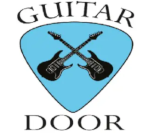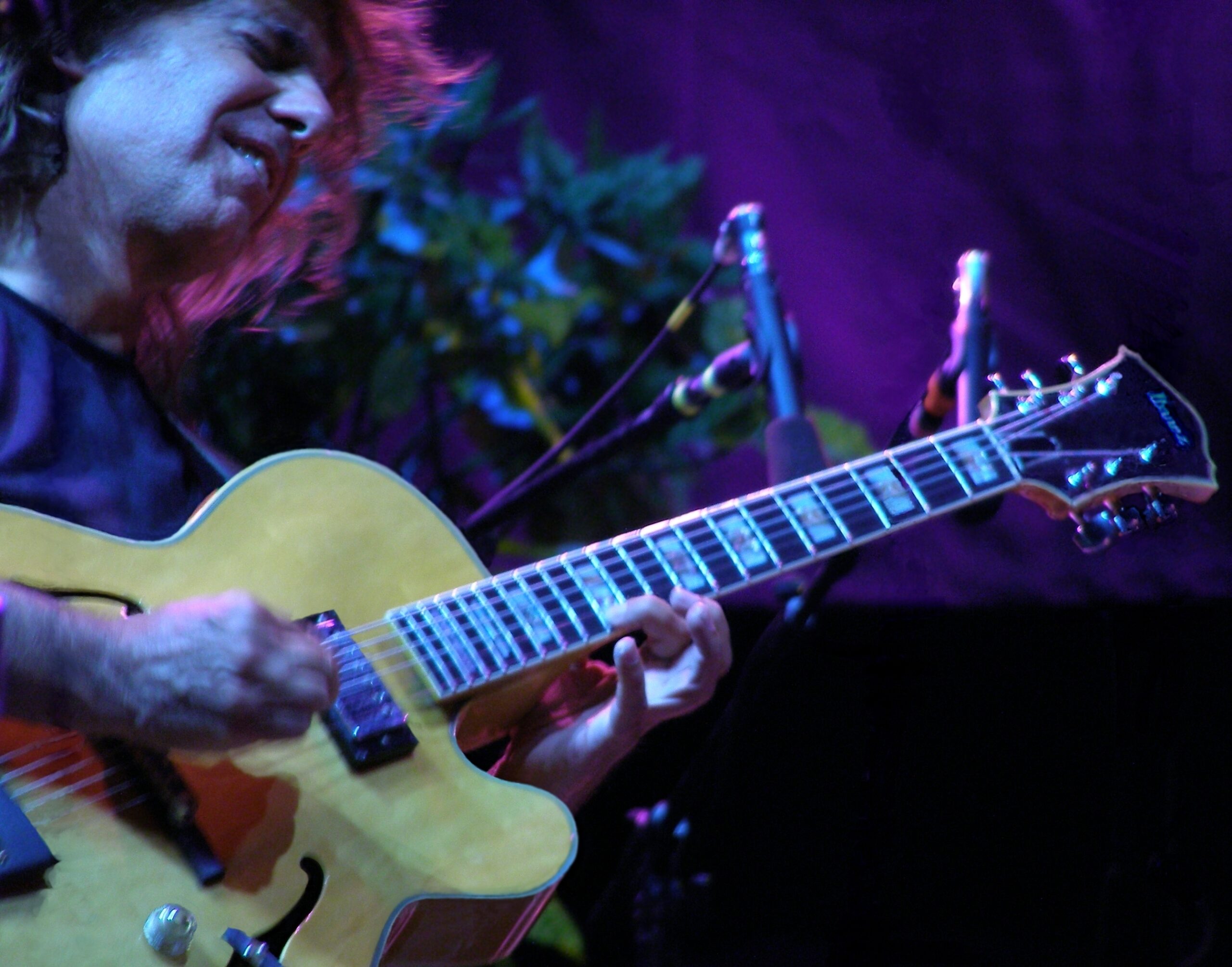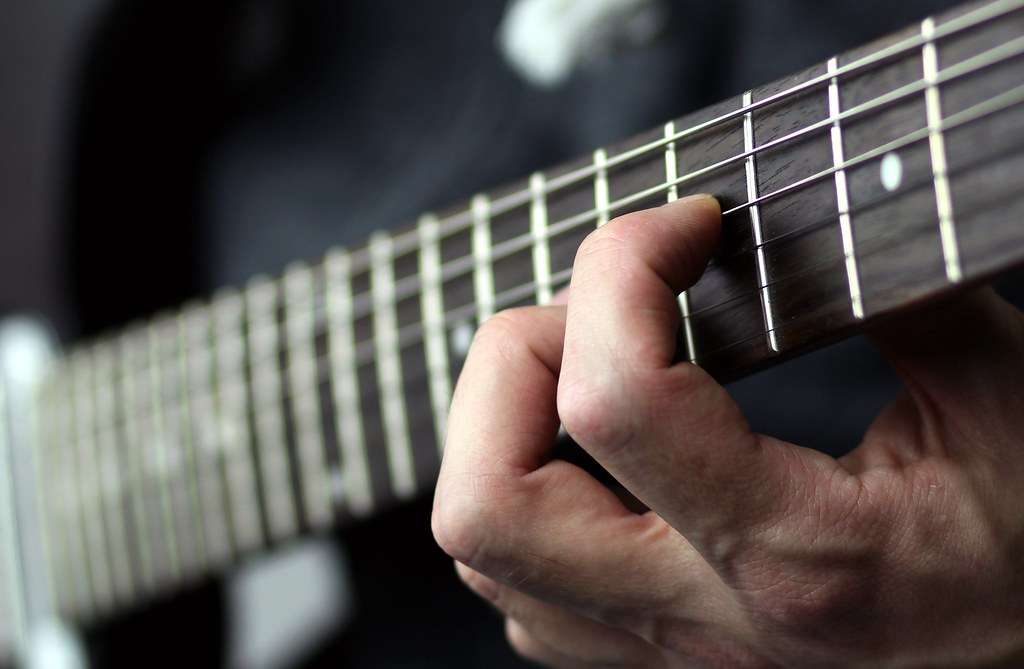Music, an abstract language of emotion, encases ineffable beauty that tugs on our heartstrings. Chords: A Sonic Exploration One of its most bewitching elements is the minor chord, a mysterious tool that often infuses a sense of melancholy, tranquility, or brooding intensity into compositions. Comprehending the theory behind these chords can aid our understanding of their emotional depth and broad utility across various genres. The following exploration begins with an examination of minor chord structures and their uncanny ability to evoke an array of stirring emotions. It then extends into studying the application of minor chords across musical genres, their strategic use in composition, and the therapeutic power they potentially hold in the realm of music therapy.
The Theory Behind Minor Chords
Music: a ballet of vibrations coursing through the air, carefully choreographed to resonate with our souls—sometimes soothing, occasionally haunting—but always speaking to us in a universal language, deep and enigmatic. Each skillfully arranged chord carries its expressive meaning, and among them, the minor chord reigns supreme as an emblem of poignancy, bearing an enduring, bittersweet quality that’s universally relatable and intimately human. What exactly evokes this emotion from minor chords, and how do they differ from their major counterparts? Let’s strike a chord with this intriguing anomaly.
To explore the minor chord, we delve first into its essence—the raw notes. Every chord, minor or major, hinges primarily on three notes: the root, the third, and the fifth. Together they form what’s known as a triad. The root note is the sturdy foundation upon which the chord is built, the tonal epicenter. The fifth is the chord’s loyal companion, providing a sense of stability and fortitude. The third, however, is the capricious one in the mix, the variable that determines whether a chord is major or minor.
In a major chord, the third is usually four half-steps—or semitones—away from the root note, maintaining an uplifting vibe with its bright tonal character. In a minor chord, however, the third drops one step lower, just three semitones away from the root. This slight variation results in a more somber tone, creating the minor chord’s distinctive, pensive sound. It’s akin to a shift in lightning—a sunny day turning into a tranquil dusk—adding new dimensions of depth, allure, and emotive power.
Ah, but to merely think of minor chords as sorrowful or melancholic would be an oversimplification. The beauty of minor chords lies not only in their ability to convey certain emotions but also in their capacity to enhance, strengthen, and deepen the musical narrative. They enrich a composition with emotional gravity, adding that necessary tinge of complexity that pulls at heartstrings and minds alike.
Imagine a world constituted solely of major chords, emitting an endless, monotonous sigh of unadulterated joy. Would happiness not lose its value without even the faintest whisper of strife or sorrow? Herein lies the distinct beauty of minor chords, punctuating the melody with moments of introspection, bringing an essential balance to the sonic ensemble.
An intriguing novelty of minor chords is their capacity to impart a global charm. Consider the resounding influence of blues and jazz—apotheoses of minor chords—in crafting a rich American musical heritage. Or the haunting allure of the Spanish ‘Flamenco’, so powerfully grounded in minor keys. It’s a testament to how minor chords diffuse borders and cultures, connecting hearts universally in an emotive, musical embrace.
So when music’s maestros craft their symphonies, it’s the minor chord’s unique palette of emotions that they use to paint their auditory landscapes. By doing so, they ensure the listener embarks on an immersive, complex, and meaningful voyage within the mesmerizing realm of music. Minor chords, then, are not just mere triads of notes—they are instrumental catalysts that challenge and provoke, whisper and roar, ensnaring us within their melodic narratives.
So here’s to the minor chords, the soul-touching enigmas, encapsulating sorrow and joy in their intricate harmonies, coloring our world with emotions so piercing and profound, they continue to reverberate in every corner of this sonic universe. They imbue music with purpose and depth, ensuring that this universal language forever remains the powerful medium of self-expression, unity, and identity that it is today.

The Emotional Impact of Minor Chords
Unraveling the Mystery: What Makes Minor Chords Evoke Emotion?
Have you ever been entranced by a melancholy tune and that sense of profound melancholic embrace sweeps over you? That captivating siren’s call in song that seizes your heart? Often, the secret potion behind this magic is minor chords. Though the artistry behind chords, minor and major alike, is clearly understood within the music community, there is an enchanting enigma about the emotional energy emitted specifically by minor chords.
Unplugging the enigma of minor chords requires immersing ourselves in the scientific understanding of sound. Every sound wave has a frequency, and our brains perceive these frequencies as pitch. Major chords, often associated with merriment and triumph, consist of harmonic frequencies that match perfectly, creating a sound that feels stable and complete. On the other hand, minor chords, renowned for their inherent capacity to elicit emotion, contain a dissonant interval. This slight imbalance lends minor chords a sense of yearning, a feeling of discontent that drives the sense of emotional depth.
Parading through your collection of Beethoven’s symphonies to the sultry allure of the blues, or even the heart-thumping beats of heavy metal, minor chords lend themselves effortlessly across genres. The global appeal of minor chords is not solely their haunting beauty, but their comfort within disruption. They are the symphony amidst chaos, the cries of a rebellion, or the whispers of passionate love. They carry with them a sense of humanity – all the joy, pain, love, and anguish – and weave them into the fabric of music that touches us all profoundly.
Minor chords are not simply tools instrumentalists use to tug at our heartstrings or an aural painting that composers tack on their musical canvas for added depth. They are a resonant voice that speaks volumes to our innate human emotion. They communicate the unspeakable, the ineffable–the whispers of our hearts hidden beneath the noise of every day. Like a moth drawn to the light, we often find ourselves inexplicably attracted to the melancholy beauty emanating from the dissonance of minor chords.
The hallowed corridors of music history are lined with compositions that make clever use of minor chords. Be it, Mozart’s Requiem or Radiohead’s Creep, minor chords have created masterpieces that not only stand the test of time but transcend generational boundaries to connect listeners at a much deeper level. The reason we keep going back to these musical numbers is not their technical brilliance alone but the visceral emotional journey they offer.
Minor chords, in essence, unmask the beauty of vulnerability. In their dissonance, we find the poignancy of a fleeting moment. In their rawness, we unearth the profound emotional dialogue of music – a dialogue as nuanced, beautiful, and complex as humanity itself.
So next time you find yourself immersed in the melodic sea of a minor chord, remember that you are not alone. These chords resonate so universally, so intimately because they capture our shared emotional experiences. As the notes of that minor chord float and fizzle into the air, remember that its very discord is the song of being beautifully human – a song that rings true to every heart and soul. After all, it is the love for these minor marvels that binds the music world into one soulful symphony.

Minor Chords in Different Genres
Pivoting from the intricate essence of minor chords and their ubiquitous appeal explored previously, let’s set off on a journey on how different musical genres utilize these powerful undercurrents of melody. A compilation of notes strung together in harmony sculpt the fascinating tale of minor chords across diverse musical landscapes. Buckle up! It’s time to traverse the musical globe and observe the distinctive yet unifying characteristics of minor chords across genres.
Blues: The Melancholic Anecdote
Blues, in its rawest form, is an emotional dialogue of despair, longing, and life’s raw trials. This genre is saturated with the heart-wrenching pull of minor chords. They elevate the powerful narratives, injecting the music with a sense of deep yearning and restless trouble. The intrinsic sadness bestowed by minor chords is often found in the genre’s traditional 12-bar blues pattern, emphasizing the music’s lamenting nature.
Jazz: The Unpredictable Euphoria
Jazz hinges on the delightful curveballs – its unpredictability. Swinging between highs and lows, minor chords add a dash of grounding melancholy amidst the erratic notes. The harmonic complexity of the genre finds its ally in the emotional depth minor chords offer, creating a dynamic dance of rhythm and feeling.
Rock: The Intense Rebellion
Where can we find the intensity of rock music better reflected than in the fervent strumming of a minor chord? They pound a pathway for the genre’s rebellious narratives, projecting angst, pessimism, and even quiet surrender perfectly. The numerous sub-genres of rock music often employ minor chords to create their unique soundscapes, fueling the powerful emotional undertones in each track.
Pop: The Fusion of Feelings
Pop music is the great blender of musical elements, a versatile cocktail that serves up relatable experiences on a dance-inducing platter. Minor chords slip into this genre with an uncanny subtlety, often alternating with major chords to paint a vibrant picture of bittersweet reality. The minor undertone tugs at the heartstrings while the catchy, upbeat tempo keeps spirits high – a delicate dance of emotions.
Country: The Old-Time Storyteller
Country music, with its storytelling at the heart, often leans on minor chords to tug the narrative deeper into heartache or triumph. Used sparingly, these chords shine a poignant spotlight on particular lines or phrases, adding a layer of expressiveness to the heartfelt tales of old-time love, loss, and lessons learned.
In essence, minor chords are the unsung heroes of music composition. They bridge the gap between lyric and listener, creating a bond formed out of common, unspoken sentiments. Each genre harnesses their power differently, shaping unique soundscapes and emotional experiences that speak to every individual listener in distinct yet profound ways. And that’s the subtle magic that minor chords spin – linking hearts, bridging minds, and uniting souls through the power of music.

The Role of Minor Chords in Musical Composition
Beyond their musicality and emotional resonance, minor chords serve as a creative tool for musicians across styles and genres. Like skilled painters using different brushes and colors to bring their visions to life, musicians blend minor chords into their soundscapes, enhancing depth, creating tension, and painting extraordinary auditory portraits that span all human experiences.
In blues music, often lauded as the melancholic anecdote, minor chords weave a sonic tapestry of raw emotion, sincerity, and soul-saturated storytelling. Blues artists like B.B. King summon heart-wrenching narratives with the noble eloquence of minor chords, illustrating tales of love and loss, struggle, hope, and resilience. The cry of every guitar solo reveals the bittersweet allure of minor chords and their central role in the DNA of blues music.
Conversely, jazz, the genre of unpredictable euphoria, employs minor chords to color songs with a seductive sense of mystery. From Louis Armstrong to Miles Davis, jazz musicians have mined the richness of minor chords, every discordant note serving as a steppingstone to unchartered territories of sonic expression. The unspoken excitement lies in the complex harmonic sequences where minor chords unpredictably weave, creating a captivating syncopation on this timeless musical canvas.
The intense rebellion of rock music relies on minor chords to emphasize its fervor and to express its angst. Pioneers like Jimi Hendrix and modern titans such as Jack White utilize minor chords to unleash potent sound waves that run through the veins of listeners worldwide. Minor chords here create a sonic intensity, translating the raw spirit and rebellion intrinsic in rock.
In pop music, minor chords serve as the fusion of feelings. Many pop songs rotate their melodic wheel around minor chords, triggering emotions that range from joyful ecstasy to soul-touching melancholy. The use of minor chords in the construct of pop anthems like Michael Jackson’s ‘Billie Jean’ and Billie Eilish’s ‘Bad Guy’, illustrates the depth and range these chords provide in shaping our emotional encounter with music.
Lastly, country music uses minor chords as the old-time storyteller. Minor chords in country music symbolize nostalgia and longing that transcends time. Sitting sweetly in the intersection between pleasure and pain, minor chords in this genre breathe life into the rustic narratives, painting heartfelt memories in our minds.
From arena rockers to basement bluesmen, pop divas to country crooners, musicians across genres rely on minor chords to add depth and complexity to their work. Irrespective of genre, musicians find an ally in minor chords, creating a symphony of human emotion, connection, and shared experience that resonates across cultures and borders. Such is the unifying power of music, and minor chords are among its most compelling scribes.

Minor Chords in Music Therapy Chords: A Sonic Exploration
Bearing this rich understanding of minor chords in mind, let’s leap into the realm of music therapy. The enveloping cloak of minor chords carries profound therapeutic potential. Not simply confined within the scope of artistic expression, they are effectively employed for emotional healing. These chords possess the profound ability to echo the human experience and speak the language of the soul.
Music therapy is a unique discipline that involves the use of sound to address the physical, emotional, cognitive, and social needs of individuals. Harnessing the symbiotic relationship between auditory stimuli and emotional state, therapists can create bespoke music-based treatments. In this context, the strategic use of minor chords plays a pivotal role.
Psychologists have found that minor chords can induce a cathartic emotional experience. Through the resonance and amplification of unvoiced sentiments, they can provide an avenue for emotional release. They manage to put a finger on emotions that often go unnoticed or unexpressed, providing them with melody and giving them space to breathe.
In therapy sessions, minor chords can be used to enhance introspection and empathetic understanding. Like a tuning fork for complex emotions, they echo feelings of melancholy, nostalgia, or contemplation, which are often difficult to express verbally. This frequency helps individuals explore the spectrum of their emotions – recognizing, confronting, and eventually, understanding them.
Furthermore, minor chords are also employed in a therapeutic discipline called Guided Imagery in Music (GIM). It’s a practice where carefully selected music – often abundant in minor chords – is used as an effective tool in uplifting spirit, encouraging personal growth, fostering endurance, and helping people face and navigate through their emotional ache.
Consider the haunting melodies of Samuel Barber’s “Adagio for Strings”, the bittersweet whisper of Claude Debussy’s “Clair de Lune”, or the poignant siren song of Erik Satie’s “Gymnopédie No.1”. These compositions encompass the essence of minor chords and reflect their healing power.
So, to all the ardent music lovers and casual listeners out there, the next time you come across minor chords while listening to your favorite song or resonating with a symphony, remember there’s more lurking beneath the surface. These chords not only communicate emotion or create resonance, but they also possess a deep capacity for emotional healing and restoration.
From the therapy room to the concert hall, the soothing spectral whisper of the minor chord serves as a universal language, it echos the truths hidden within our hearts, bridges emotional gaps, and most importantly, heals. Their power lies not just in the sound they create, but also in the silence they leave behind, a testament to the endless potency of music and the minor chords that saturate it.
Unlocking the emotional depth of minor chords opens a compelling tapestry of musical understanding. These chords can stir profound sentiments, shaping the narrative of a song or even a symphony. Their usage across countless genres testifies to their versatility, revealing an underlying sonic universality. The creative stratagem behind their implementation in musical composition reveals the intricacy of crafting musical masterpieces. Meanwhile, the therapeutic applications of minor chords underscore their profound effects on the human psyche, helping to soothe, heal, and connect in unexpected ways. Ultimately, comprehension of the minor chords’ emotional nuances deepens the experience of listening, composing, and healing through music.









